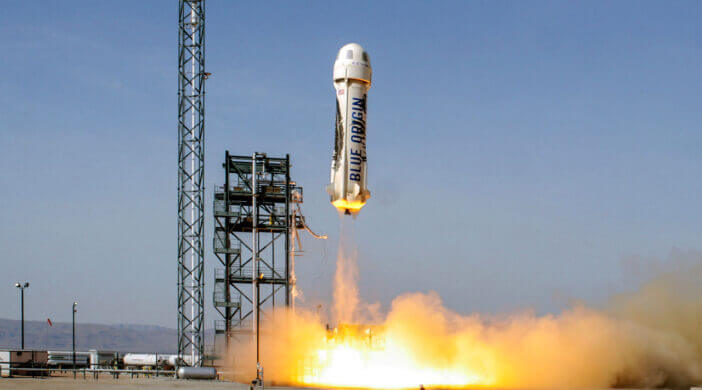Blue Origin is still investigating the in-flight failure of its New Shepard rocket last September that resulted in the abort of a capsule carrying a load of experiments, the system’s chief architect said on Tuesday.
Gary Lai did not provide a timeline for when the investigation might be completed, or when the rocket/capsule system would resume suborbital flights during a talk at the the Next-generation Suborbital Researchers Conference (NSRC) in Broomfield, Colo.
New Shepard’s rocket suffered a catastrophic failure during ascent from the company’s launch base in west Texas on Sept. 12. The capsule’s abort rocket fired and rapidly accelerated the capsule away from the disintegrating rocket. The spacecraft and its load of experiments landed safely under parachutes.
The abort system performed as predicted and in line with what passengers who fly on the vehicle train for, Lai added. Blue Origin performed two planned abort tests — one from the ground, the other in flight — while New Shepard was in development. The flight last September was the system’s first unplanned abort.
Lai told the audience that space tourism flights with up to six people aboard would dominate the manifest when New Shepard returns to flight. The company plans to provide several dedicated research missions per year.
Blue Origin has flown 12 dedicated missions that have carried more than 100 payloads devoted to science, technology demonstrations and education. The company has conducted six tourism flights with 32 passengers aboard. (One passenger, Evan Dick, flew twice.)
Blue Origin is opening up payload space for experiments and technology demonstrations on New Shepard’s booster for all flights, Lai said. The rocket typically reaches suborbital space at an altitude of 105-106 km (65.2-6.9 miles), which is usually slightly lower than the capsule itself.
Lai told the NSRC attendees that Blue Origin is looking to fly researchers who would be able to tend to experiments during the flights.
Lai added that Blue Origin has a contract with NASA under which the New Shepard capsule would be spun to simulate lunar gravity, which is 16.6% of Earth’s gravity. The flight will aid the space agency in its Artemis program to return astronauts to the moon later this decade.
Blue Origin is also working with NASA to use New Shepard flights to train future astronauts, he added.
Lai: Have flown 12 dedicated payload missions with more than 100 payloads — science, tech demos and education. #nsrc2023. Plus 6 tourist missions with 32 passengers (Evan Dick flew twice). “We are democratizing space.”

